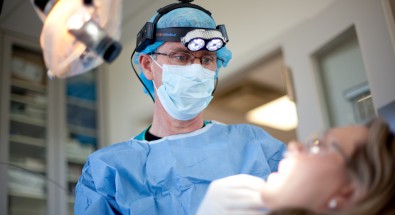What Is a Sinus Lift and How Would One Benefit Me?
A sinus lift is a common bone grafting procedure that is performed when there is not enough bone in the upper jaw to accommodate a dental implant. It is becoming increasingly more popular as more people are desiring dental implants to replace their missing teeth.
Your maxillary sinuses are on either side of your nose. A sinus lift, or sinus augmentation, is when bone is added between your upper jaw and your sinuses. After the molar teeth or sometimes the premolar teeth are lost, there may not be enough bone height to support dental implants. The sinus lift involves your surgeon moving your sinus membrane or ‘lifting’ it up to make room for more bone, which in turn allows proper bone height for optimal placement and success of dental implants.
Here are a few reasons why you may require a sinus lift:
If You Suffered from Periodontal Disease:
Periodontal diseases are an umbrella term for bad oral infections around your teeth. Periodontal disease includes gingivitis and periodontitis. Periodontal disease also involves bone loss around your teeth. If you lost your upper posterior teeth because of periodontal disease, you likely have lost too much bone and will need a sinus lift to obtain the necessary bone height to support dental implants.
Lost A Tooth/Teeth
The jaw bone that supports the teeth is called alveolar bone. When you lose your teeth, the alveolar bone starts to deteriorate and resorb. With tooth loss, there may be a loss of bone as well. If your upper posterior teeth such as your molars have been missing a while, there is often not enough bone left to place implants. You will require a sinus lift to regain the lost bone.
The Location of Your Maxillary Sinus
The maxillary sinus anatomy (shape and size) varies among individuals. Some people’s sinuses are so close to their upper jaw that there is no room to place a dental implant fully in bone. The sinus can also enlarge as you get older. You may require a sinus lift as a result so that there will be enough room for a dental implant.
What to expect
Before a sinus lift, our office will take a special 3-D cone-beam CT image to assess the sinus anatomy in detail to determine how the procedure will be carried out. The sinus lift involves your surgeon making a small window in the upper jaw into the sinus and pushing up or ‘lifting’ up the sinus membrane lining to create room for the new bone. The membrane lining is what separates the sinus from your upper jaw. The bone graft used may be from your own bone or from donor bone or animal bone. The bone graft is added into the newly created space between your sinus membrane lining and your upper jaw. Recovery is usually uneventful and quick after this type of surgery. Depending on how much bone is required, you will need to wait for the sinus lift bone graft to heal for a few months before placement of the dental implants.
For more information on your condition and which future steps are right for you to, contact Pacific Coast Oral & Maxillofacial Solutions today!

